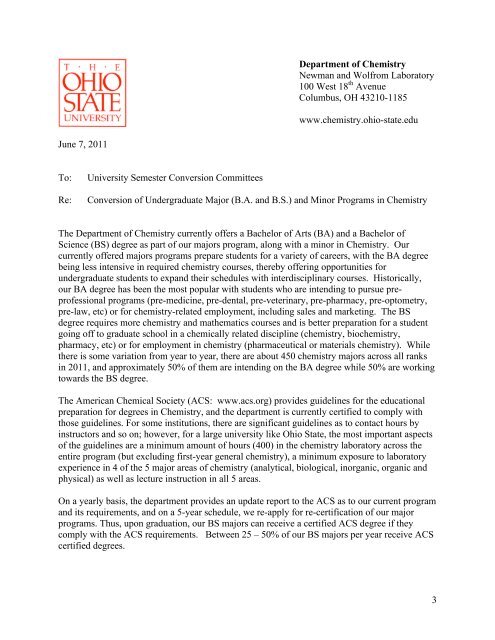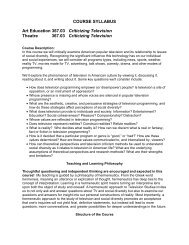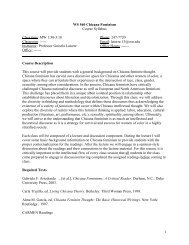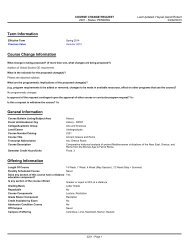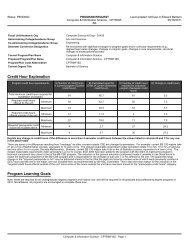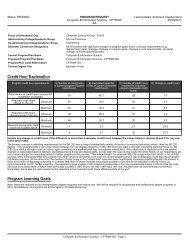Chemistry BA Revised 6-8-11.pdf - The Ohio State University
Chemistry BA Revised 6-8-11.pdf - The Ohio State University
Chemistry BA Revised 6-8-11.pdf - The Ohio State University
Create successful ePaper yourself
Turn your PDF publications into a flip-book with our unique Google optimized e-Paper software.
Department of <strong>Chemistry</strong>Newman and Wolfrom Laboratory100 West 18 th AvenueColumbus, OH 43210-1185www.chemistry.ohio-state.eduJune 7, 2011To:Re:<strong>University</strong> Semester Conversion CommitteesConversion of Undergraduate Major (B.A. and B.S.) and Minor Programs in <strong>Chemistry</strong><strong>The</strong> Department of <strong>Chemistry</strong> currently offers a Bachelor of Arts (<strong>BA</strong>) and a Bachelor ofScience (BS) degree as part of our majors program, along with a minor in <strong>Chemistry</strong>. Ourcurrently offered majors programs prepare students for a variety of careers, with the <strong>BA</strong> degreebeing less intensive in required chemistry courses, thereby offering opportunities forundergraduate students to expand their schedules with interdisciplinary courses. Historically,our <strong>BA</strong> degree has been the most popular with students who are intending to pursue preprofessionalprograms (pre-medicine, pre-dental, pre-veterinary, pre-pharmacy, pre-optometry,pre-law, etc) or for chemistry-related employment, including sales and marketing. <strong>The</strong> BSdegree requires more chemistry and mathematics courses and is better preparation for a studentgoing off to graduate school in a chemically related discipline (chemistry, biochemistry,pharmacy, etc) or for employment in chemistry (pharmaceutical or materials chemistry). Whilethere is some variation from year to year, there are about 450 chemistry majors across all ranksin 2011, and approximately 50% of them are intending on the <strong>BA</strong> degree while 50% are workingtowards the BS degree.<strong>The</strong> American Chemical Society (ACS: www.acs.org) provides guidelines for the educationalpreparation for degrees in <strong>Chemistry</strong>, and the department is currently certified to comply withthose guidelines. For some institutions, there are significant guidelines as to contact hours byinstructors and so on; however, for a large university like <strong>Ohio</strong> <strong>State</strong>, the most important aspectsof the guidelines are a minimum amount of hours (400) in the chemistry laboratory across theentire program (but excluding first-year general chemistry), a minimum exposure to laboratoryexperience in 4 of the 5 major areas of chemistry (analytical, biological, inorganic, organic andphysical) as well as lecture instruction in all 5 areas.On a yearly basis, the department provides an update report to the ACS as to our current programand its requirements, and on a 5-year schedule, we re-apply for re-certification of our majorprograms. Thus, upon graduation, our BS majors can receive a certified ACS degree if theycomply with the ACS requirements. Between 25 – 50% of our BS majors per year receive ACScertified degrees.3


